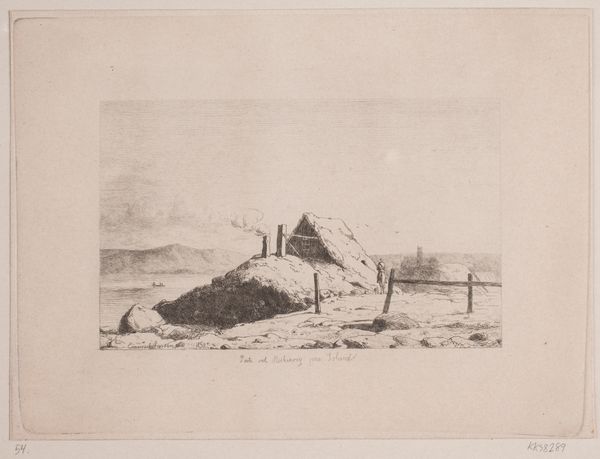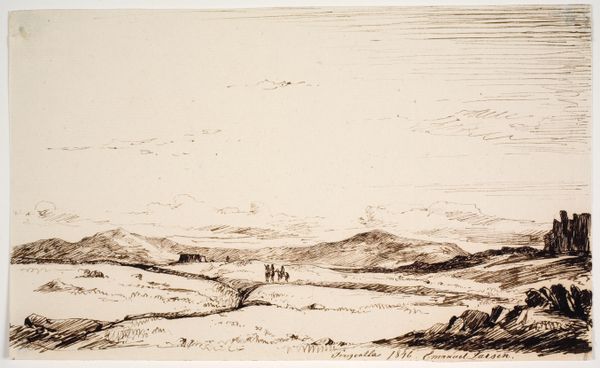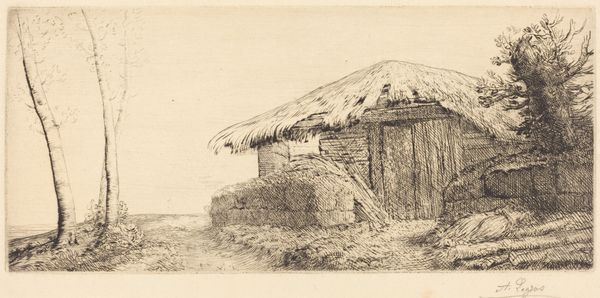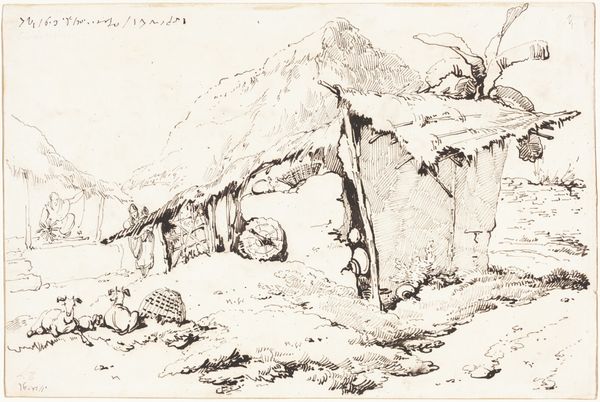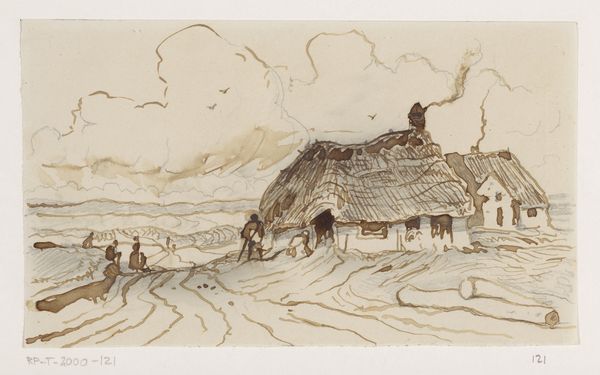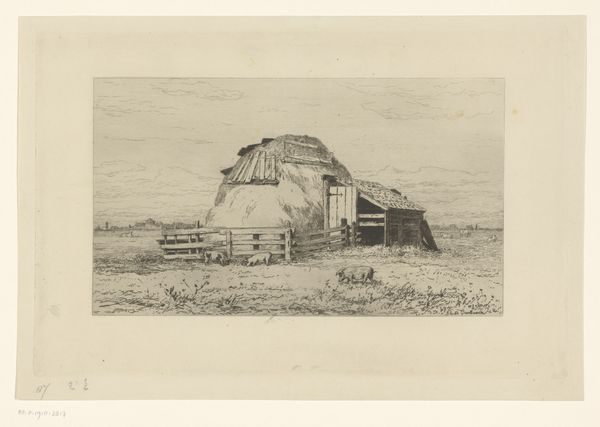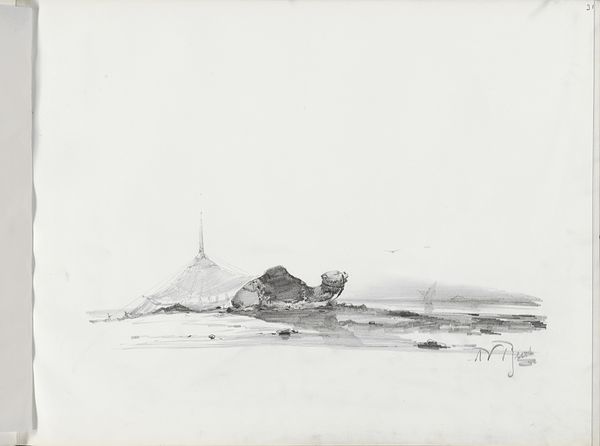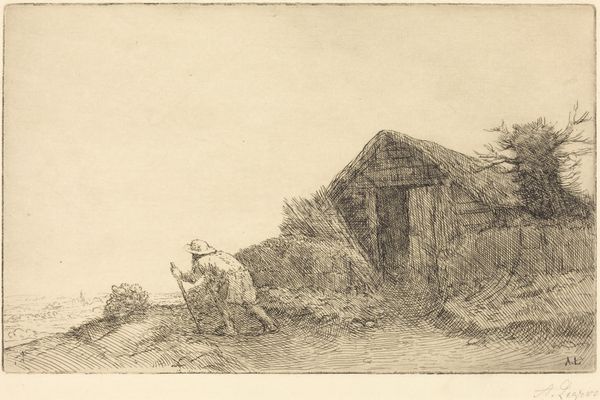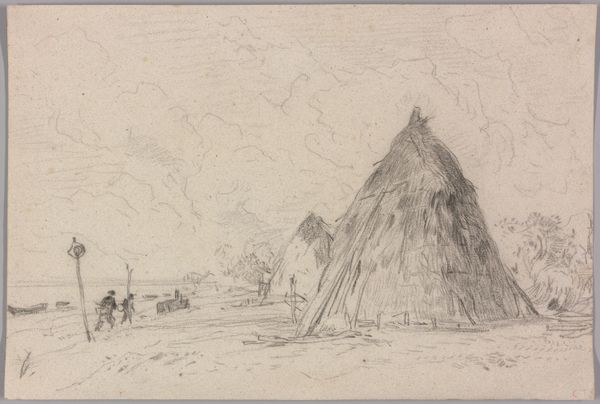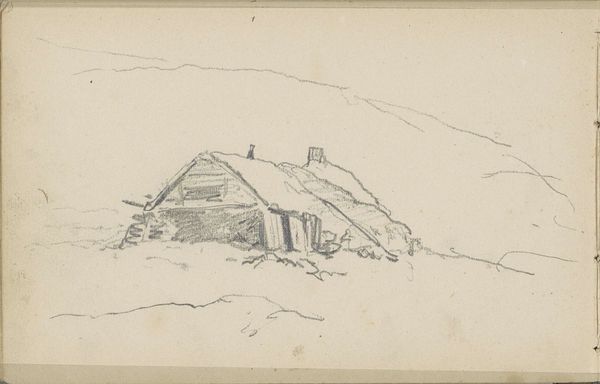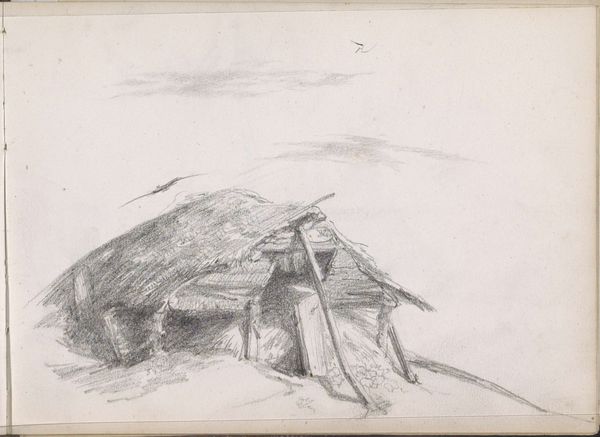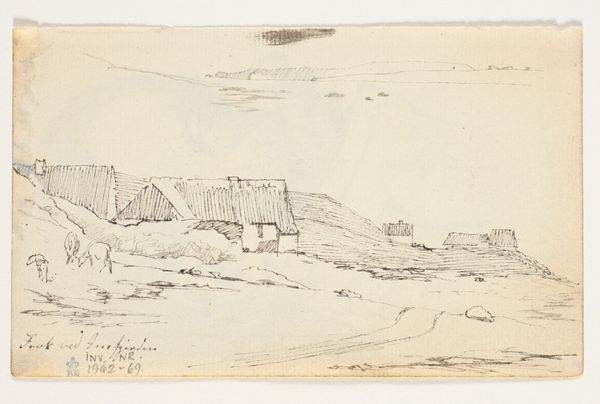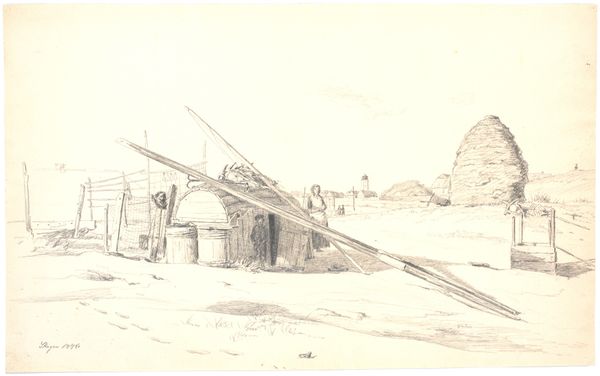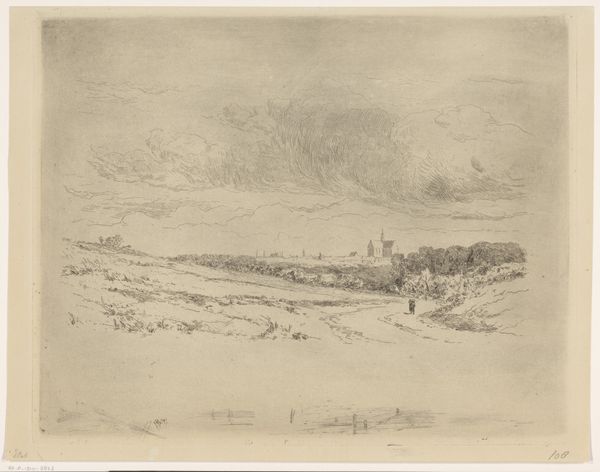
drawing, ink, pencil
#
drawing
#
ink drawing
#
ink painting
#
pencil sketch
#
landscape
#
etching
#
ink
#
romanticism
#
pencil
Dimensions: 144 mm (height) x 214 mm (width) (bladmaal)
Editor: We're looking at "Jordhus ved Reykjavik," or "Earth House near Reykjavik," a pencil and ink drawing from 1846 by Emanuel Larsen. It strikes me as quite stark. The landscape seems barren, and the dwelling looks rather isolated. What do you see in this piece? Curator: The Romantic period often aestheticized the ruggedness of nature and the lives of those living on its fringes, reflecting broader anxieties about industrialization and social upheaval. This work seems to participate in that, while also highlighting the socio-economic realities of 19th-century Iceland. Consider the “earth house” itself. Its construction speaks to a specific relationship between the people and their environment, a resourcefulness born of necessity. How does the artist’s choice of materials and composition reinforce these ideas? Editor: Well, the muted palette definitely emphasizes the harsh environment. And the house seems so vulnerable on that small hill. Is it a political statement, maybe about land ownership or class divisions? Curator: Precisely! It’s worth questioning whose stories are being told – or not told – in landscape art. Think about it in terms of the distribution of resources and the power dynamics inherent in the representation of 'common' dwellings like this. Was this image created for local Icelanders, or was it made for an audience far removed from this life? Editor: So it’s not just a pretty picture, but a commentary on society. Curator: Exactly. Art serves as a visual record of societal structures, power relationships, and historical forces that shaped these perceptions. Recognizing that dynamic transforms our reading of a seemingly simple landscape. Editor: I’ll never look at landscapes the same way again. Thank you. Curator: My pleasure. It’s important to acknowledge the multiple voices embedded in the art historical narrative, voices that can reveal hidden truths about our past and present.
Comments
No comments
Be the first to comment and join the conversation on the ultimate creative platform.
